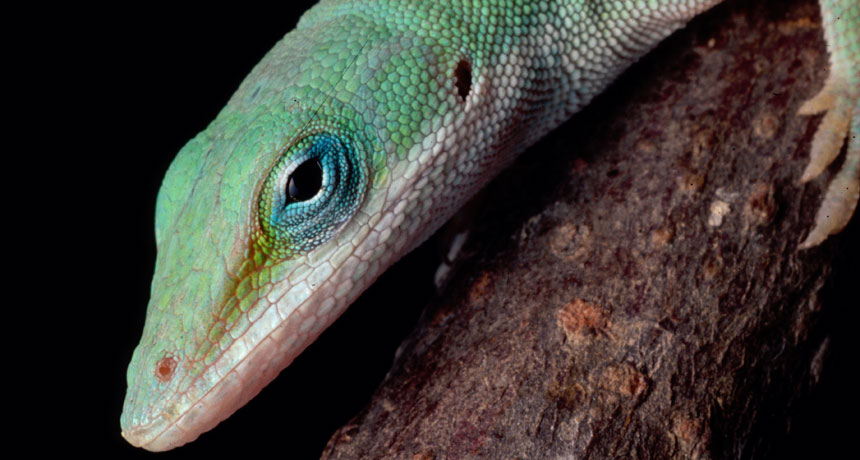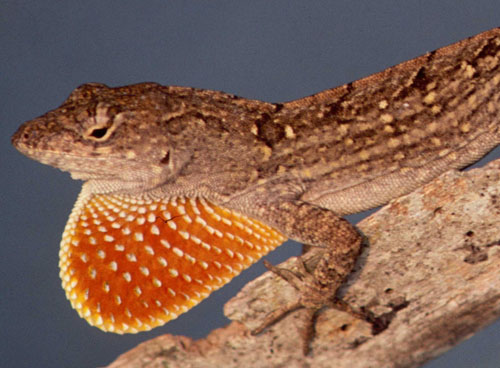Invasion drives quick evolution of lizard feet

After their Florida island homes were invaded by Cuban anoles, Carolina anoles moved higher into the tree canopy and developed feet better suited for taking them there.
Dr. Todd Campbell
- More than 2 years ago
Evolution is often thought of as being such a slow process that it can’t be observed. That’s not true, but to happen quickly, there usually has to be some sort of strong pressure on a population to drive any sort of fast evolution.
For Carolina, or green, anoles, a type of lizard from the southeastern United States, that pressure comes from an invader — the Cuban, or brown, anole. Cuban anoles arrived in South Florida in the 1950s, probably as stowaways in shipments of agricultural products from Cuba (a relatively common method of accidental introduction for invasive species) and over the next decades spread across the Carolina anole’s range.
The two species have similar lifestyles and food requirements, so when they find each other living in the same neighborhood, fights for space, and probably food, occur. But the two species eventually find a balance: The Carolina anoles have not only moved to higher perches, but they also now have larger toepads that help them live at those new heights, researchers report in the Oct. 24 Science.
Yoel Stuart at the University of Texas at Austin and colleagues performed a series of experiments with Carolina anoles living on Florida islands created in the mid-20th century from material dredged to create the Atlantic Intracoastal Waterway. In May 1995, researchers deliberately introduced Cuban anoles to three of the islands.

The researchers confirmed that the change was genetic in several ways, including by hatching eggs in the lab and raising offspring in identical conditions.
“This morphological change occurred quickly,” the researchers note. Assuming that all the Cuban anole invasions happened in 1995, the larger toepads evolved in the Carolina anoles after only 20 generations.
The speed of the lizard evolution would be equivalent to human height increasing from 5 feet 9 inches (the average for U.S. males today) to 6 feet 4 inches within just 20 generations (about 400 to 500 years), the researchers say.






